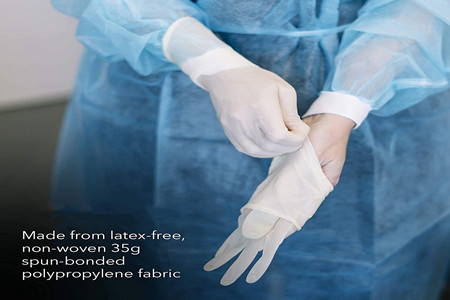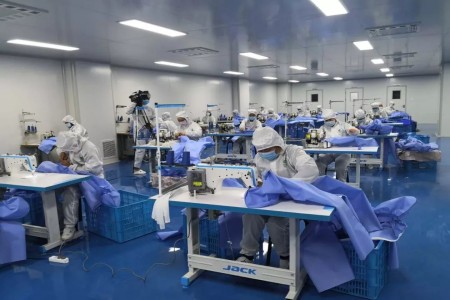2023/6/16

Clinical Evaluations Highlight Key Considerations for Isolation Gown Selection
Recent clinical evaluations are shedding light on the complexities of isolation gown selection in healthcare settings, emphasizing the need for a comprehensive approach to ensure the safety of healthcare workers (HCWs) and patients.
Understanding Barrier Effectiveness
Isolation gowns serve as a critical barrier against the transmission of infectious organisms and bodily fluids in healthcare environments. However, studies reveal that the effectiveness of these gowns can vary significantly based on material type, impermeability, and processing conditions. The American Association of Textile Chemists and Colorists (AATCC) TM42 and AATCC TM127 test methods are used to determine a gown's compliance with AAMI levels 1 through 3.
Challenges in Gown Selection and Usage
Several challenges have been identified in the evaluation and use of isolation gowns:
Lack of Standardized Testing: While the highest AAMI level requires testing for bacterial penetration, many users assume all gowns offer equal protection against blood, body fluids, and other potentially infectious materials (OPIM).
Inconsistent Performance: Studies have found that disposable isolation gowns can sometimes fail to meet standard specifications for liquid barrier protection, with a significant percentage of HCWs experiencing fluid strikethrough (fluid penetration through the gown) during use.
Subjectivity in Selection: A survey revealed that over 40% of wearers did not have a choice regarding gown protection levels, highlighting a potential disconnect between perceived risk and appropriate gown selection.
Underreporting of Strikethrough: Despite the occurrence of strikethrough, many incidents go unreported, indicating confusion among HCWs regarding gown classification and proper usage.
Key Considerations for Healthcare Facilities
To enhance safety and optimize gown selection, healthcare facilities should:
Improve Guidance and Training: Provide clear, up-to-date guidance on gown performance and selection based on fluid exposure risk. Ensure HCWs understand the different AAMI levels and their corresponding protection levels.
Promote Open Communication: Encourage HCWs to report any instances of strikethrough or other gown failures. These reports can help identify potential issues with gown performance or selection.
Implement Comprehensive Evaluation Processes: Conduct thorough evaluations of isolation gowns, considering both fluid barrier properties and durability factors like strength and tear resistance.
Engage Frontline Workers: Involve HCWs in the selection process to ensure gowns are comfortable, easy to use, and appropriate for the tasks they perform.
Focus on Human Factors: Prioritize gown designs that minimize the risk of contamination during donning and doffing.
Redesigned Gowns and Future Directions
Recognizing the need for improvement, researchers have begun to focus on redesigning gowns to address issues observed with standard isolation gowns. While initial evaluations of redesigned gowns have not shown significant differences in nonadherence and use problems, they have indicated that HCWs perceive the redesigned gowns more favorably in terms of usability and task load.
Moving forward, continued research and collaboration are essential to develop and implement effective strategies for isolation gown selection and usage, ultimately protecting HCWs and patients from the risk of infection.




 WhatsApp
WhatsApp
Send us your message
You can send an email asking for the price and detailed information of this product. We will reply you as soon as we receive your email